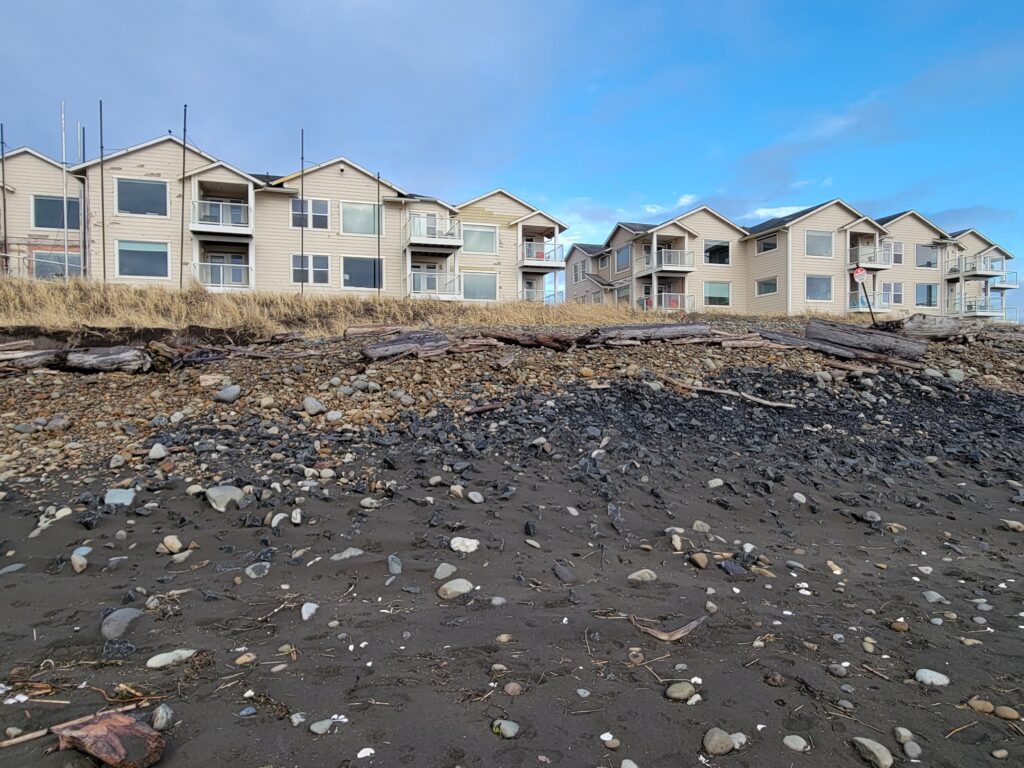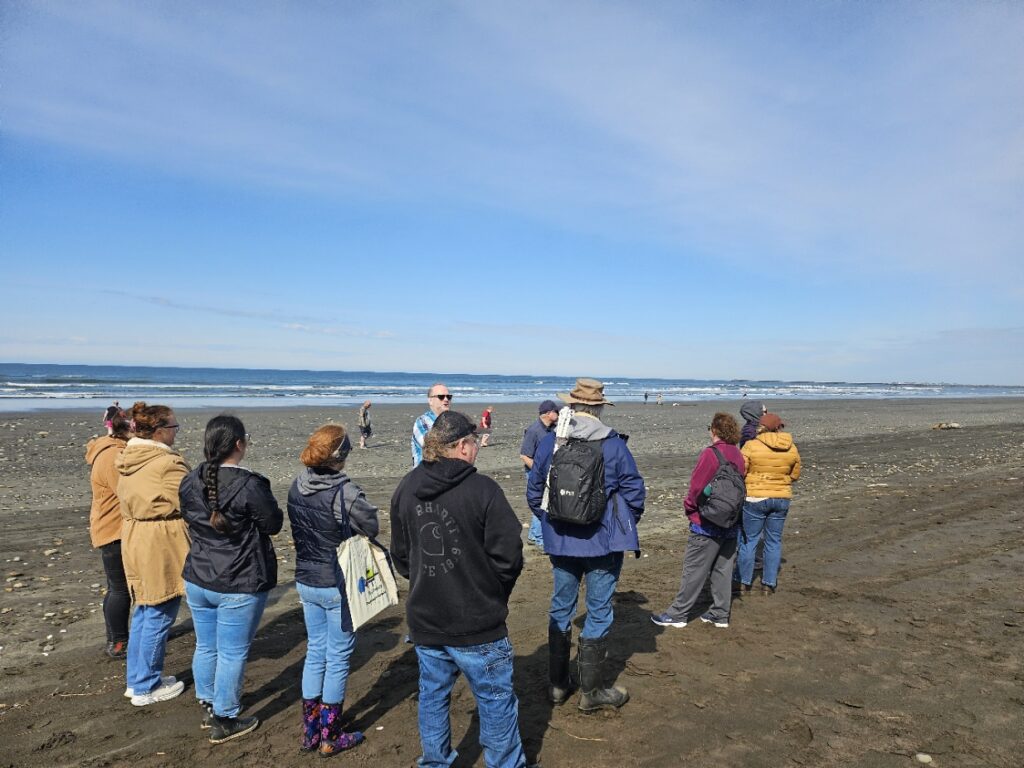Usually, when teachers talk about holding a ‘professional development’ session at the beach, it’s wishful thinking and involves beverages with miniature umbrellas. For Grays Harbor educators, however, the Pacific Ocean is their backyard and the shoreline in front of Westport by the Sea condominium development is a perfect place to learn about the intersection of climate science, civics and engineering. That’s exactly what one group did at PEI’s Phenomena-Based Teaching with Field Investigations in Coastal Hazards workshop this April.
Phenomena-based teaching is an approach that uses ‘anchoring phenomena’ as a starting point for a unit of instruction to encourage students to ask questions, explore and develop explanations. Engaging students through this process fosters a deeper understanding of scientific concepts. The in-person training at Westport Maritime Museum used PEI’s coastal hazards climate science storyline to introduce anchoring phenomena.
“[Westport City Council Member Troy Meyers’] talk expanded our view of the projects happening in Westport to control erosion. He covered everything from structural engineering to challenges with funding.”
— PEI’s Mid-Sound FieldSTEM Coordinator Daniel Cuevas
After introductory activities at the museum, the group headed to the beach where they formulated ‘investigable’ questions based on their observations of the anchoring phenomenon of coastal erosion. “We went

to a spot right next to the condos where the city has implemented a pretty ambitious berm project to protect the shoreline,” says Daniel Cuevas, PEI’s Mid-Sound FieldSTEM Coordinator. “On one side, there was erosion and no mitigation and on the other side was the berm project.” Teachers recorded observations in their field journals about both the engineering methods designed to control erosion and the environmental impacts of erosion and sea level rise.
Westport City Council member Troy Meyers joined the group to provide background and insight into the organizations and considerations involved in constructing the berm. “There was a high level of engagement,” says Cuevas, who co-facilitated the workshop with PEI’s Coastal FieldSTEM Coordinator John Hunter. “His talk expanded our view of the projects happening in Westport to control erosion. He covered everything from structural engineering to challenges with funding.”
Back at the museum, participants heard from Scott Mazzone, a shellfish biologist with the Quinault Indian Nation Department of Natural Resources. Coastal flooding has severely impacted the Quinault Nation to the extent that they are moving their entire community uphill Mazzone shared information about that move and introduced an annual tide pool survey he conducts and ways that teachers could apply it in their classrooms. “Both of the speakers were really knowledgeable,” Cuevas notes. “They had so much engagement with participants and covered such a breadth of issues. It was pretty spectacular.”
Grays Harbor Marine Resource Committee funded the workshop and participation stipends. Any participating teachers who implement an aspect of the coastal hazards storyline or the full storyline before the end of this school year will receive an implementation stipend through funding from Grays Harbor Community Foundation. “They seemed confident with the storyline,” says Cuevas. “Several of them were talking about how they can really see implementing this with their students.”
